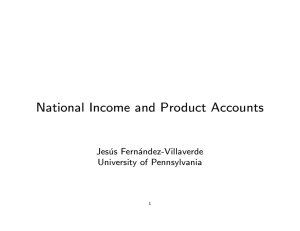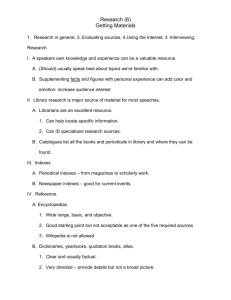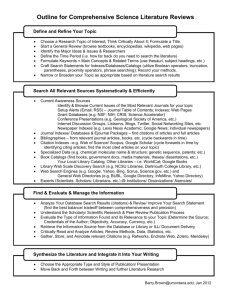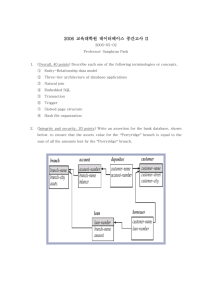Advance Journal of Food Science and Technology 10(3): 209-213, 2016
advertisement
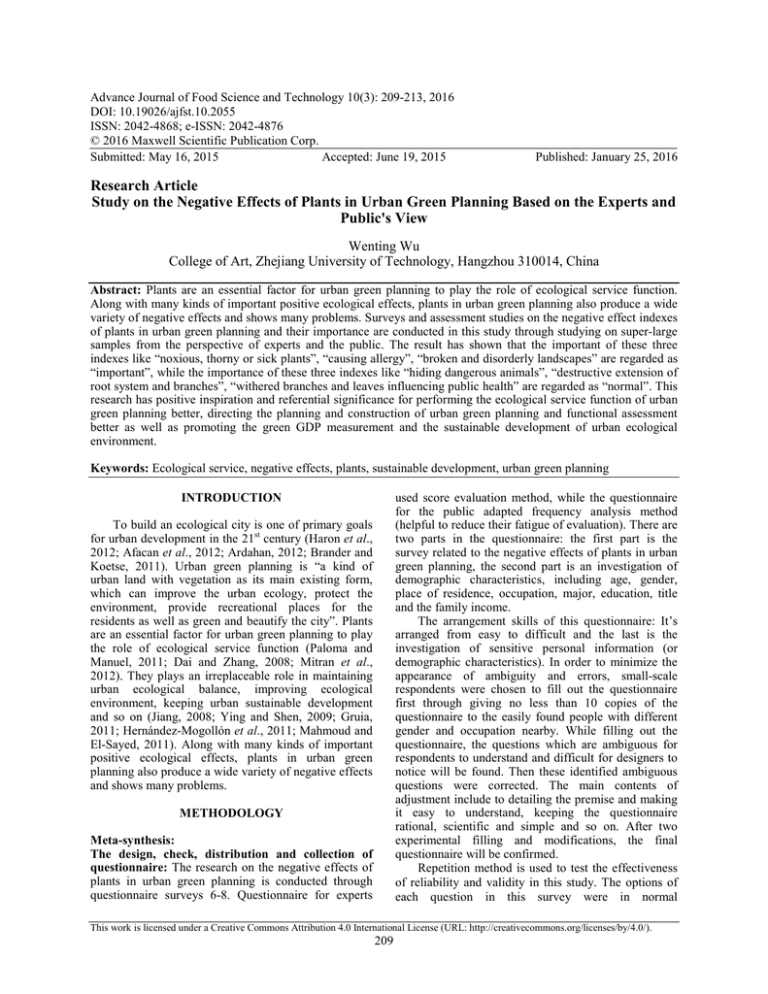
Advance Journal of Food Science and Technology 10(3): 209-213, 2016 DOI: 10.19026/ajfst.10.2055 ISSN: 2042-4868; e-ISSN: 2042-4876 © 2016 Maxwell Scientific Publication Corp. Submitted: May 16, 2015 Accepted: June 19, 2015 Published: January 25, 2016 Research Article Study on the Negative Effects of Plants in Urban Green Planning Based on the Experts and Public's View Wenting Wu College of Art, Zhejiang University of Technology, Hangzhou 310014, China Abstract: Plants are an essential factor for urban green planning to play the role of ecological service function. Along with many kinds of important positive ecological effects, plants in urban green planning also produce a wide variety of negative effects and shows many problems. Surveys and assessment studies on the negative effect indexes of plants in urban green planning and their importance are conducted in this study through studying on super-large samples from the perspective of experts and the public. The result has shown that the important of these three indexes like “noxious, thorny or sick plants”, “causing allergy”, “broken and disorderly landscapes” are regarded as “important”, while the importance of these three indexes like “hiding dangerous animals”, “destructive extension of root system and branches”, “withered branches and leaves influencing public health” are regarded as “normal”. This research has positive inspiration and referential significance for performing the ecological service function of urban green planning better, directing the planning and construction of urban green planning and functional assessment better as well as promoting the green GDP measurement and the sustainable development of urban ecological environment. Keywords: Ecological service, negative effects, plants, sustainable development, urban green planning used score evaluation method, while the questionnaire for the public adapted frequency analysis method (helpful to reduce their fatigue of evaluation). There are two parts in the questionnaire: the first part is the survey related to the negative effects of plants in urban green planning, the second part is an investigation of demographic characteristics, including age, gender, place of residence, occupation, major, education, title and the family income. The arrangement skills of this questionnaire: It’s arranged from easy to difficult and the last is the investigation of sensitive personal information (or demographic characteristics). In order to minimize the appearance of ambiguity and errors, small-scale respondents were chosen to fill out the questionnaire first through giving no less than 10 copies of the questionnaire to the easily found people with different gender and occupation nearby. While filling out the questionnaire, the questions which are ambiguous for respondents to understand and difficult for designers to notice will be found. Then these identified ambiguous questions were corrected. The main contents of adjustment include to detailing the premise and making it easy to understand, keeping the questionnaire rational, scientific and simple and so on. After two experimental filling and modifications, the final questionnaire will be confirmed. Repetition method is used to test the effectiveness of reliability and validity in this study. The options of each question in this survey were in normal INTRODUCTION To build an ecological city is one of primary goals for urban development in the 21st century (Haron et al., 2012; Afacan et al., 2012; Ardahan, 2012; Brander and Koetse, 2011). Urban green planning is “a kind of urban land with vegetation as its main existing form, which can improve the urban ecology, protect the environment, provide recreational places for the residents as well as green and beautify the city”. Plants are an essential factor for urban green planning to play the role of ecological service function (Paloma and Manuel, 2011; Dai and Zhang, 2008; Mitran et al., 2012). They plays an irreplaceable role in maintaining urban ecological balance, improving ecological environment, keeping urban sustainable development and so on (Jiang, 2008; Ying and Shen, 2009; Gruia, 2011; Hernández-Mogollón et al., 2011; Mahmoud and El-Sayed, 2011). Along with many kinds of important positive ecological effects, plants in urban green planning also produce a wide variety of negative effects and shows many problems. METHODOLOGY Meta-synthesis: The design, check, distribution and collection of questionnaire: The research on the negative effects of plants in urban green planning is conducted through questionnaire surveys 6-8. Questionnaire for experts This work is licensed under a Creative Commons Attribution 4.0 International License (URL: http://creativecommons.org/licenses/by/4.0/). 209 Adv. J. Food Sci. Technol., 10(3): 209-213, 2016 distribution. The degree of correlation between two groups of survey content was above the moderate level. The total reliability coefficient was 0.93 by using Pearson product-moment correlation formula, which was relatively high. The criterion-related validation of survey content was 0.88, which was with good validity. Cluster random sampling method was used for subject research. In the survey, it emphasized the anonymity, no standard answers and individual true will and tried to minimize respondents’ tendency of catering for survey. Besides the traditional paper surveys, e-mail surveys and website investigations were also opened, thus making respondents and investigating ways more diversified. Ninety eight effective questionnaires from experts and 2326 from the public were collected and the distribution of demographic characteristics of the survey samples was diversified and extensive, which suggests the typicality and reliability of these survey results is high. Theoretical Analysis Method, consult 10 experts of urban green planning or from the related field of ecology and 100 public about the applicability and integrity of each negative effect index obtained by the Theoretical Analysis Method and provide them with the indexes obtained in the mess selection through Document Retrieval Method, facilitating the experts and the public to make synthetical consider and adjustment so as to reduce the fatigue of evaluation. Principles for adding indexes: When no less than 1/3 of the expert, or no less than 1/3 of the public, or no less than 1/4 of the expert and no less than 1/4 of the public suggest adding some indexes, the indexes can be added. Principles for reducing indexes: When no less than 2/3 of the expert, or no less than 2/3 of the public, or no less than 1/2 of the expert and no less than 1/2 of the public suggest reducing some indexes, the indexes can be cancelled. After taking the Index Attribute Grouping Method, the preliminary screening indexes can be listed as follows: The thought of index screening: While screening the evaluation indexes, it’s supposed to follow the systematical principle, pertinence principle, comparable principle, feasible principle, hierarchy principle as well as the principle combining quantitative and qualitative analysis. While choosing indexes, all the principles should be taken into consideration instead of only one single principle. At present, main methods to sift out indexes include Theoretical Analysis Method, Document Retrieval Method, Expert Consulting Method, Frequency Analysis Method, Interior Extrapolation Method and Index Attribute Grouping Method. And Public Consulting Method is added to this research. • • • • • • Broken and disorderly landscapes Destructive extension of root system and branches Causing allergy Hiding dangerous animals Withered branches and leaves influencing public health Noxious, thorny or sick plants RESULTS Preliminary screening of indexes: A combination of Theoretical Analysis Method, Document Retrieval Method, Expert Consulting Method, Public Consulting Method and Index Attribute Grouping Method is used while conducting the preliminary screening of indexes. The assessment results of negative effects of plants in urban green planning from the expects: We have taken a quantification grading survey to the question “Please grade the importance of the negative effects of plants in urban green planning”. The selection of scores on the paper questionnaire is 10, 9, 8, 7, 6, 5, 4, 3 and ≤2, respectively and to grade on an electronic edition questionnaire can be realized by clicking the drop-down list box to select any score between 0 and 10. Ninetyeight effective samples from experts were obtained. The average assessment score of all negative effect indexes of plants in urban green planning from experts is displayed in Table 1. From Table 1, we can see the average assessment score of negative effect indexes of plants in urban green planning from experts is in the following order: “broken and disorderly landscapes” > “causing allergy” > “noxious, thorny or sick plants” > “hiding dangerous animals” > “destructive extension of root system and branches” > “withered branches and leaves influencing public health”. The top three indexes are “broken and disorderly landscapes”, “causing allergy” and “noxious, Document retrieval method: Make a sea election for negative effect indexes through looking up related literature. Theoretical analysis method: Analyze the type of urban green planning plants’ negative effects and pick up the indexes with higher frequency in recent related fields. Meanwhile, combine the background characteristics, ecological condition, user characteristics and other factors of urban green planning plants’ negative effects, then synthetically determine the indexes with higher pertinence after analyzing and comparing. Expert consulting method and public consulting method: Based on the Document Retrieval Method and 210 Adv. J. Food Sci. Technol., 10(3): 209-213, 2016 Table 1: Expects’ assessment scores of negative effect plants Type of index Broken and disorderly landscapes Destructive extension of root system and branches Causing allergy Hiding dangerous animals Withered branches and leaves influencing public health Noxious, thorny or sick plants Avg.: Average indexes of system and branches” > “withered branches and leaves influencing public health”. These indexes “noxious, thorny or sick plants”, “causing allergy” and “broken and disorderly landscapes” are ranked the top three, while the index “withered branches and leaves influencing public health” is ranked the last. Avg. score 6.3163 5.0204 6.1020 5.0306 3.8776 6.0408 The assessment results of negative effects of plants in urban green planning from the expects: The six negative effect indexes of plants in urban green planning have been marked as follows: A (refers to Broken and disorderly landscapes), B (refers to Destructive extension of root system and branches), C (refers to Causing allergy), D (refers to hiding dangerous animals), E (refers to Withered branches and leaves influencing public health) and F (refers to Noxious, thorny or sick plants). According to the assessment scores from the experts and the public, we got Fig. 1. From Fig. 1, it can be seen that among the six indexes, only the score of F (refers to Noxious, thorny or sick plants) from the public is higher than that of the experts, while the scores of another 5 indexes from the public are lower than those of the experts. By and large, the assessment of negative effects of urban green planning’ plants from the public is lower than that of the experts. A descriptive survey of the question “Do you think the assessment of the public is important for the ecosystem service function of urban green planning?” have been taken. There are 5 levels, including “Very important”, “Important”, “Normal”, “Unimportant” and “Rather unimportant”. From the statistical data, it is seen that the proportion of public assessment for the ecosystem service function of urban green planning from the perspective of experts is 41.84% and that from the perspective of the public is 43.21%, so the average is 42.53%, thus, the proportion of public assessment for the ecosystem service function of urban green planning is 42.53%. Combining this result with the assessment scores of the negative effect indexes of urban green planning’ plants from the experts and the public in Table 1 and Table 2, we can get the score results of different indexes shown in Table 3. From Table 3, it can be seen that the average score of negative effect indexes of plants in urban green planning after integrating the assessment of the experts and the public is in the following order: “noxious, thorny or sick plants” > “causing allergy” > “broken and disorderly landscapes” > “hiding dangerous animals” > “destructive extension of root system and branches” > “withered branches and leaves influencing public health”. These indexes “noxious, thorny or sick plants”, “causing allergy” and “broken and disorderly landscapes” are ranked the top 3, while the index “withered branches and leaves influencing public health” is ranked the bottom (Table 4). Table 2: The public’s assessment scores of the negative effect indexes of plants Type of index Avg. score Broken and disorderly landscapes 3.6586 Destructive extension of root system and branches 2.9966 Causing allergy 4.5615 Hiding dangerous animals 3.3104 Withered branches and leaves influencing public health 2.3560 Noxious, thorny or sick plants 6.9647 Avg.: Average Table 3: Scores of the negative effect indexes of plants in urban green planning Type of index Avg. score Broken and disorderly landscapes 5.1860 Destructive extension of root system and branches 4.1597 Causing allergy 5.4468 Hiding dangerous animals 4.2990 Withered branches and leaves influencing public health 3.2304 Noxious, thorny or sick plants 6.4338 Avg.: Average Table 4: The fundamental parameters of the scores of negative effect indexes of plants Type Numerical Type Numerical Number of sample 6 1/2 ınterval of 0.5935 quartile Sum 28.7557 Average 0.8963 deviation Mean 4.7926 Range 3.2034 Geometric mean 4.6794 Variance 1.2722 Median 4.7425 Standard 1.1279 deviation Inter-quartile range 1.1871 Coefficient of 0.2353 variation Table 5: The assessment criteria of negative indexes’ importance Importance of index Important Normal Unimportant Criteria ≥ raverage <Raverage <0.5 raverage ≥0.5 raverage thorny or sick plants”, while the last one is the index “withered branches and leaves influencing public health”. The assessment results of negative effects of plants in urban green planning from the expects: We have taken a descriptive survey of the question “Among the negative (or harmful) factors of plants in urban green planning, which do you think are important?”. And 2326 effective samples were got from the public. From Table 2, it can be seen that the assessment score of negative effect indexes of plants in urban green planning from the public is in the following order: “noxious, thorny or sick plants” > “causing allergy” > “broken and disorderly landscapes” > “hiding dangerous animals” > “destructive extension of root The importance assessment for the negative effect indexes of plants in urban green planning: Table 5 211 Adv. J. Food Sci. Technol., 10(3): 209-213, 2016 Fig. 1: The score comparison of different negative effect indexes (A): Broken and disorderly landscapes; (B): Destructive extension of root system and branches; (C): Causing allergy; (D): Hiding dangerous animals; (E): Withered branches and leaves influencing public health; (F): Noxious, thorny or sick plants Table 6: The importance of the negative effect indexes of plants Type of index Importance Broken and disorderly landscapes Important Destructive extension of root system and branches Normal Causing allergy Important Type of index Hiding dangerous animals Withered branches and leaves influencing public health Noxious, thorny or sick plants shows the coefficient of variation of the 6 negative effect indexes of plants in urban green planning is 0.2353, but the importance of these 6 indexes is different. From Table 6, we can see that the importance of these three indexes “Noxious, thorny or sick plants”, “Causing allergy” and “Broken and disorderly landscapes” is “important” as taking the negative effects of plants in urban green planning on the ecological service function into account, so usually these indexes have certain negative effects on the performance of the ecological service of urban green planning; The importance of these three indexes “Hiding dangerous animals”, “Destructive extension of root system and branches” and “Withered branches and leaves influencing public health” is “Normal”, so generally these 3 indexes have little negative effects on the performance of the ecological service function of urban green planning. Importance Normal Normal Important The assessment criteria of indexes’ importance: Taking the average score of the 6 indexes Raverage = 4.7926 for reference, the specific criteria is as follows. ecological environment, maintaining ecological balance and promoting urban sustainable development. However, their negative effects should be noted, too. In the process of planning, construction and management of urban green planning, while making use of the positive ecological service effects of plants, we can neither completely ignore their negative effects nor be rather terrified of their negative effects. We should have due regard to these negative effects and try to avoid them. Especially while building the green plannings in some certain places for some special people, we should try our best to minimize or eliminate the negative effects of plants, such as trying to plant less plants with floccus and trying to plant less noxious or thorny plants at children playing spaces and the collecting and distributing areas of visitors, which has great significance for performing the ecological service function of urban green planning better, directing the planning and construction of urban green planning and functional assessment better as well as promoting the green GDP measurement and the sustainable development of urban ecological environment. DISCUSSION ACKNOWLEDGMENT As a infrastructure with vitality, self-purification capacity and the function of automatic adjustment in this urban ecosystem system, plants in urban green planning have an extremely important and irreplaceable positive ecological service effect in improving the The project is supported by the National Science Foundation of China (No. 51208467); the Welfare Technological Application Research project of Science and Technology Agency of Zhejiang Province (No. 2012C33004). 212 Adv. J. Food Sci. Technol., 10(3): 209-213, 2016 Hernández-Mogollón, J.M., A.M. Campón-Cerro, F. Leco-Berrocal and A. Pérez-Díaz, 2011. Agricultural diversification and the sustainability of agricultural systems: Possibilities for the development of agrotourism. Environ. Eng. Manag. J., 10: 1911-1921. Jiang, X., 2008. Discuss on the questionnaire in environmental impact assessment. Guangzhou Environ. Sci., 23: 36-39. Mahmoud, A.H.A. and M.A. El-Sayed, 2011. Development of sustainable urban green areas in Egyptian new cities: The case of El-Sadat City. Landscape Urban Plan., 101: 157-170. Mitran, G., S. Ilie, L. Tabacu and V. Nicolae, 2012. Modeling the impact of road traffic on air pollution in urban environment case study: A new overpass in the city of Craiova. Environ. Eng. Manag. J., 11: 407-412. Paloma, C. and C.P. Manuel, 2011. Urban green zones and related pollen allergy: A review. Some guidelines for designing spaces with low allergy impact. Landscape Urban Plan., 101: 205-214. Ying, J. and X. Shen, 2009. Significance and methods of introducing post occupancy evaluation in China's landscape architecture design. J. Zhejiang Forestry Coll., 26: 417-420. REFERENCES Afacan, O., M. Pinar and D. Guler, 2012. Development of attitude scale in the context of sustainable environmental education. Energy Educ. Sci. Technol. Part B-Soc. Educ. Stud., 4: 2479-2488. Ardahan, F., 2012. The New Ecological Paradigm (NEP scale) score of Turkish mountaineers/rock climbers, cyclists and trekkers. Energy Educ. Sci. Technol. Part B-Soc. Educ. Stud., 4: 2035-2046. Brander, L.M. and M.J. Koetse, 2011. The value of urban open space: Meta-analyses of contingent valuation and hedonic pricing results. J. Environ. Manage., 92: 2763-2773. Dai, F. and J.H. Zhang, 2008. The survey method in planning and design (1)-questionnaire survey (Theory part). Chinese Landscape Archit., 10: 82-87. Gruia, R., 2011. Study on energy resources integration and sustainability of the new modular agriculture pattern. Environ. Eng. Manag. J., 10: 1213-1219. Haron, Z., K. Yahya and Z. Jahya, 2012. Prediction of noise pollution from construction sites at the planning stage using simple prediction charts. Energy Educ. Sci. Technol. Part A-Energ. Sci. Res., 29: 989-1002. 213
